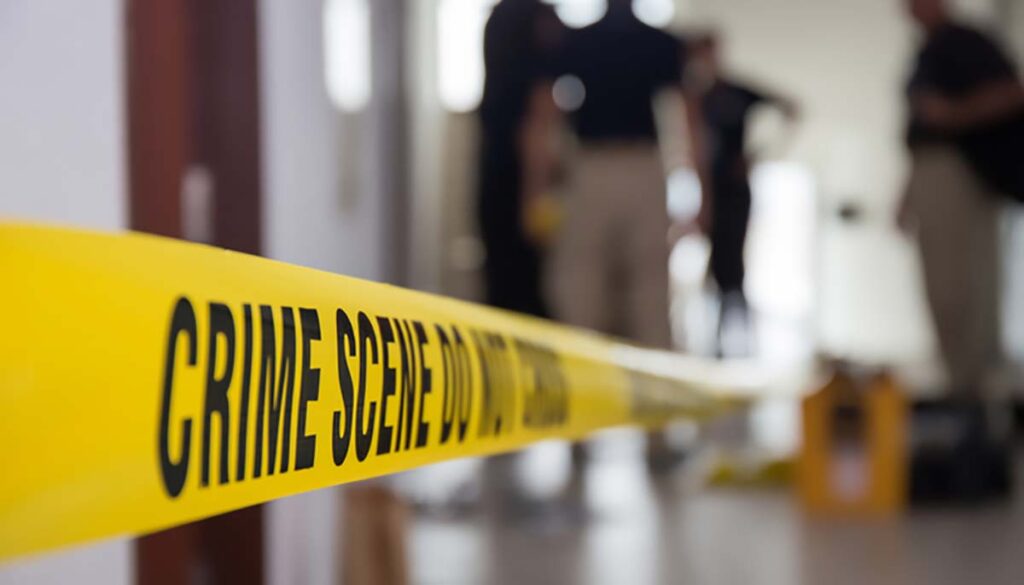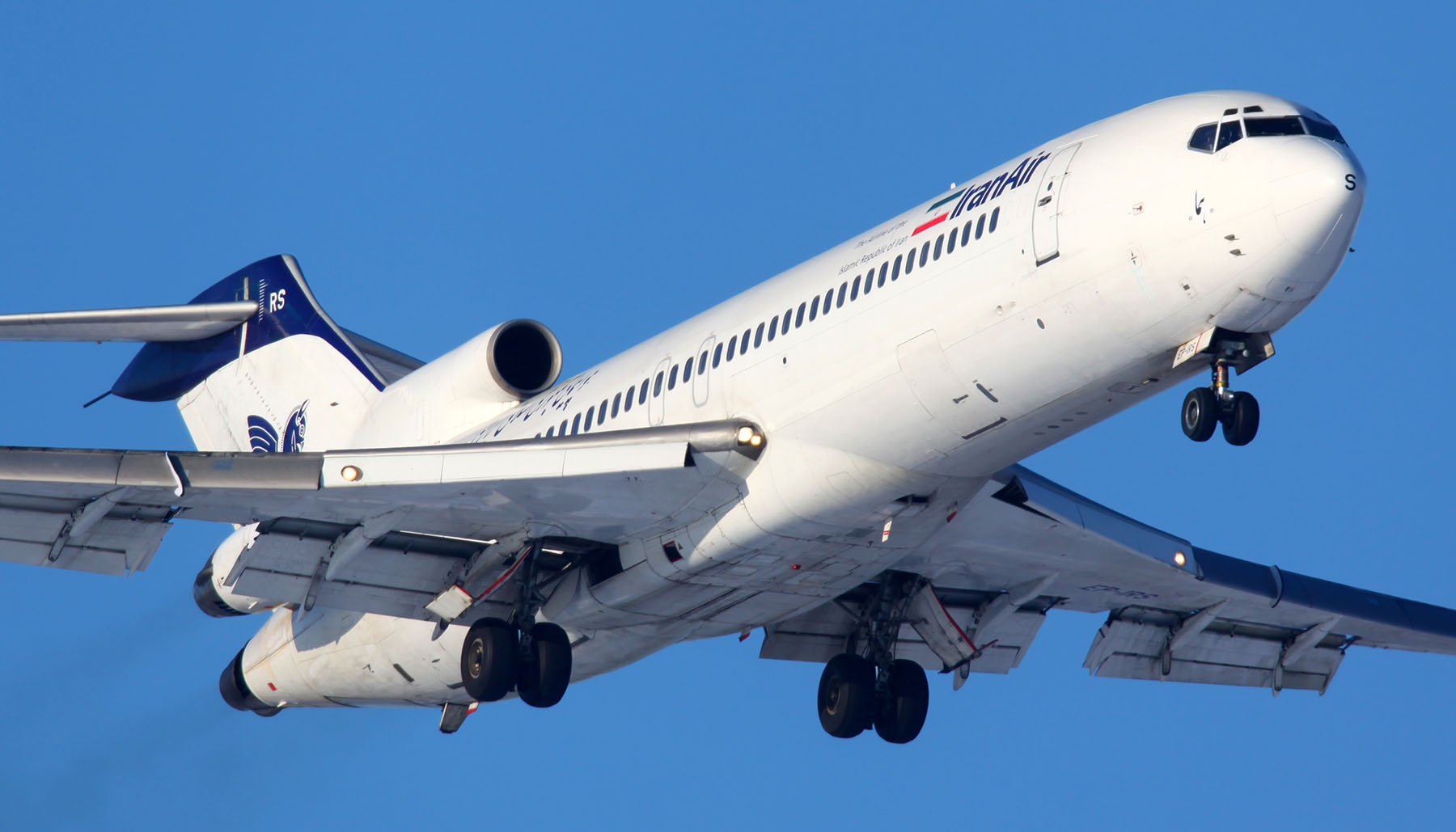On November 24, 1971, a man who introduced himself as Dan Cooper hijacked a Boeing 727 aircraft flying from Portland to Seattle. The well-dressed and reportedly mild-mannered man told flight attendants that he was armed with a bomb and demanded $200,000 in exchange for letting the passengers off the plane.

Bizarrely enough, the hijacker also requested parachutes, too, and let the passengers off the plane in Seattle. Federal authorities brought him the money and parachutes he requested, and he demanded that crews on the ground refuel the plane and that the captain take the craft on a flight to Mexico City. This second flight was to stop in Reno, Nevada, to refuel. Cooper also ordered that the pilot keep the plane low during this leg of the journey.
Roughly half an hour after the plane departed from Seattle, the hijacker walked to the back of the plane, deployed the rear staircase, and leaped out into the night. He took the money and a parachute with him. He was never seen or heard from again, despite a massive manhunt and a huge amount of interest in the case. What could have happened to the man the media would later misidentify as DB Cooper?
The Hijacking
The man who bought a plane ticket under the name “Dan Cooper” was described by witnesses as being in his early-to-mid-40s, in fit physical condition, and wearing somewhat classy attire. He seemed knowledgeable regarding the operation of airplanes and seems to have carefully selected his target plane due to its unusual rear stairwell that could be lowered while the plane was in flight.
Cooper bought a one-way ticket from Portland to Seattle on the day before Thanksgiving in 1971. He paid in cash and carried only a briefcase and a brown paper bag. He was described as having worn a brown or black suit, a black raincoat, and a thin, black tie. When he boarded the plane, he sat in the last row and politely ordered a bourbon and 7-Up. In post-incident interviews, flight attendants who spoke to Cooper say he was somewhat soft-spoken and didn’t strike them as violent.
He handed flight attendant Florence Schaffner a note that warned her that he was carrying a bomb in his briefcase and made his demands. He demanded that another flight attendant, Tina Mucklow, sit with him throughout the flight. Mucklow would later recall that Cooper seemed familiar with the local terrain. “[Cooper] was not nervous. He seemed rather nice and he was not cruel or nasty.”
On the Ground

After the FBI gathered the money for Cooper’s ransom and retrieved the parachutes to meet his demands, the plane landed at Seattle-Tacoma Aiport. There, Cooper allowed the passengers to debark the plane and Mucklow went outside to retrieve the money. When she brought it back, she attempted to ease the tension by asking Cooper if she could have some of the money.
Cooper reportedly agreed immediately and tried to hand the attendant a stack of bills. Somewhat shocked, Mucklow says she cited the company’s policy against accepting gratuities and gave Cooper the money back. He then shared his flight plan for the second leg of the trip, explaining the plane was to fly as low as possible and as slow as it could without stalling.
He initially requested that the airstair remain lowered during takeoff, but Northwest’s home office objected to such a procedure and called for the stair to be raised. Cooper relented, saying he’d lower it in the air, and demanded Mucklow stay aboard to help him once they were back in the air.
The Second Leg
Once they took back off, unbeknownst to Cooper, a trio of military aircraft followed behind the slow-moving plane outside of the hijacker’s field of view. Cooper asked Mucklow to help him lower the airstair, but she told him she was afraid of being sucked out of the aircraft. After a brief back-and-forth, he told her to simply go to the cockpit and stay there while he lowered it himself.
Before leaving, Mucklow begged Cooper to take the bomb with him. He reportedly told her he’d either disarm it or take it out with him.
Around 8 p.m., the crew saw a warning light that the airstair had been deployed. Then, the back of the plane pitched, indicating that Cooper had jumped out into the night. Still, the crew was unsure if he was still in the cabin, and continued to try to communicate with him over the intercom.
When the plane touched down in Reno two hours later, an FBI bomb squad swept it for evidence and found no bomb, no money, and little that could help them determine who, exactly, Cooper was. A manhunt ensued.
Nationwide Manhunt

The bills that were used to fill Cooper’s demands were recorded by the FBI before being handed over. As such, if any federal entities saw the serial numbers of the ransomed bills, they’d be able to determine they were spent by Cooper. This was the first lead the FBI would work from–if the money popped up, that would help them close in on Cooper.
Assuming he could have used his real name, the police interviewed a man in Portland named DB Cooper. A journalist confused this person’s name with the “Dan Cooper” alias, giving rise to the misnomer that is still applied to the case. The DB Cooper in Portland was quickly eliminated as a suspect, but his name lives on due to a lack of editorial standards at a small local newspaper.
The FBI launched a full-scale search in the region north of Portland for any sign of the hijacker. He must have landed somewhere in the woods north of a Portland residential district, authorities reasoned, given the time that the flight crew felt the plane pitch. Many pointed out that a man dressed in black jumping from the back of a low-flying plane on a cloudy night would be tough to spot even for military personnel–and, indeed, the planes flying behind the Boeing never spotted Cooper leaping from the back.
Mystery Man Captivates Public
The story quickly became a nationwide sensation. Cooper remains the only person in the history of aviation to commit an unsolved act of air piracy. The FBI contends that he likely died in his leap from the Boeing, which is why most of the money from his ransom was never found. However, amateur sleuths and even some prominent law enforcement officers who worked on the case have contended that it’s possible Cooper survived the hijacking and went into hiding.
The aura of mystery surrounding the case has kept public interest in it high for decades. The FBI officially suspended its investigation into Cooper in 2016, concluding that, whether he survived the hijacking or not, the case had gone completely cold in the intervening five decades. Still, field offices will still accept genuine physical evidence in the case, particularly anything relating to the parachutes or ransom money.
The entire FBI case has been preserved for historical documentation and can be accessed online or at the FBI headquarters in Washington, DC. This has helped propel a large uptick in interest in the case, as it’s now easier to access the firsthand materials that law enforcement officials gathered immediately after the hijacking.
What Might Have Happened?

In February 1980, a young boy named Brian Ingram found a sizable portion of the ransom money while playing in the wilderness in Vancouver, Washington. The bills had degraded badly after nearly a decade of exposure to the elements, but the FBI was able to determine from the surviving serial numbers that the cash had been used to pay Cooper.
The presence of the bills didn’t really answer any questions, though. If anything, many experts noted, it made things even more confusing for law enforcement. The recovered bills represented only a small portion of the money, meaning that Cooper could have simply lost some of the bills on his way to the ground. Or, perhaps he lost all the money, and only portions of it washed up along the Columbia River.
Many investigators find the theory that Cooper fell to his death to be hard to accept, if only because the authorities never recovered a body. On the other hand, he leaped into a dark night without skydiving equipment and over a densely forested area. That’s not even something an accomplished skydiver would try, and Cooper might have been little more than a thief with a bright idea to make some quick cash.
The Mystery is Compelling
The lack of answers is what makes the story of Dan Cooper so compelling for fans of true crime stories. Who was Dan Cooper? Was he a master criminal who found the perfect way to make a lot of money in a short amount of time? Or was he just a desperate crook who knew how to look intimating shortly before jumping out of a plane to his death?
Definitive answers, either way, would likely be unsatisfying at this point. The legend of the sky pirate who vanished into the night with a knapsack full of cash and a pair of black sunglasses on is more compelling than any hard-and-fast details about his success (or failure) could ever be.












